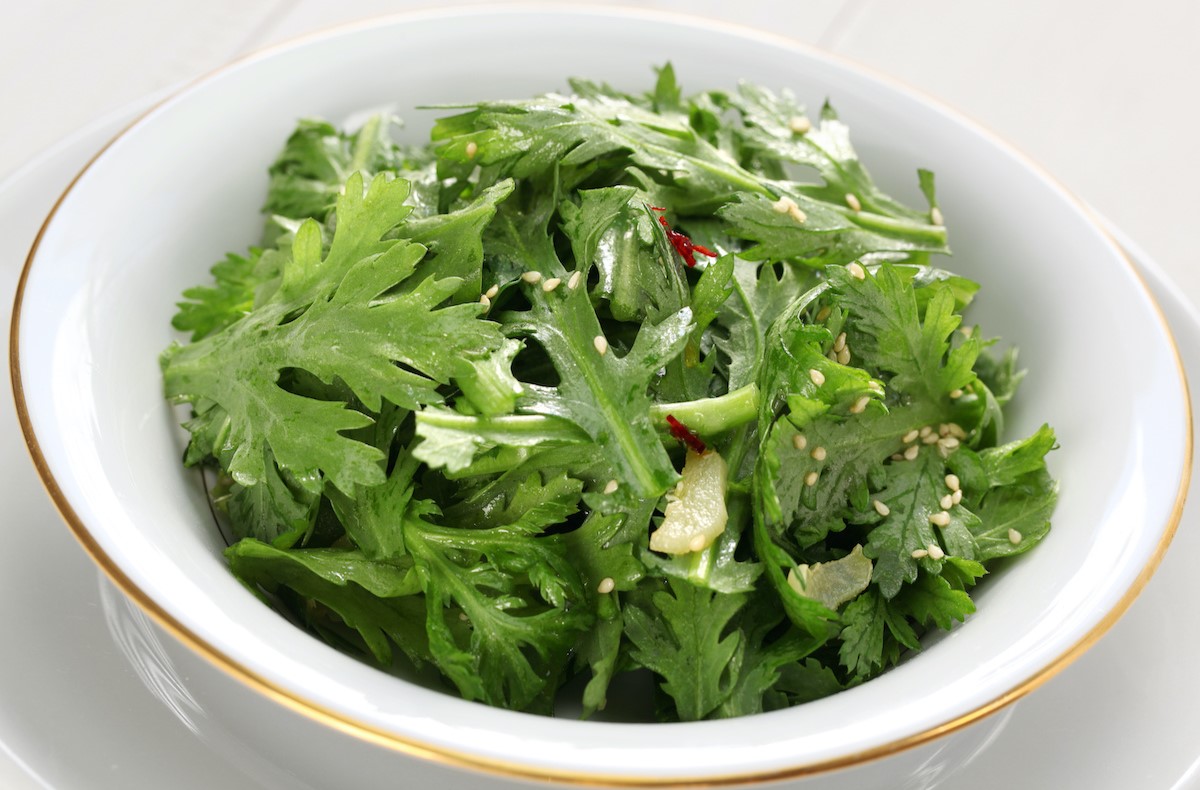
Shungiku, also known as edible chrysanthemum, is a leafy green vegetable popular in Asian cuisine. Ever wondered why this plant is a staple in many dishes? Shungiku offers a unique flavor, blending hints of pepper and mustard, making it a versatile ingredient. Not only does it taste great, but it also packs a nutritional punch. Rich in vitamins A, C, and K, along with essential minerals like calcium and iron, shungiku supports overall health. Whether added to soups, stir-fries, or salads, this green adds both taste and nutrition. Ready to learn more about this amazing plant? Let's dive into 15 fascinating facts about shungiku!
Key Takeaways:
- Shungiku, also known as edible chrysanthemum, is a leafy green vegetable with a slightly bitter taste. It's rich in vitamins A and C, making it a healthy addition to meals, especially in Japanese hot pots.
- Growing shungiku is easy and can be done in both spring and fall. It prefers well-drained soil and full sunlight, and harvesting can begin when the plants are about 4-6 inches tall. Regular harvesting encourages the plant to produce more tender leaves.
What is Shungiku?
Shungiku, also known as edible chrysanthemum, is a leafy green vegetable popular in East Asian cuisine. Its unique flavor and nutritional benefits make it a favorite in many dishes.
- Shungiku is also called Garland Chrysanthemum in English.
- This plant belongs to the Asteraceae family, the same family as daisies and sunflowers.
- Shungiku leaves have a slightly bitter taste, which adds a distinct flavor to soups and salads.
- The plant is rich in vitamins A and C, making it a healthy addition to meals.
- Shungiku is often used in Japanese hot pots like sukiyaki and shabu-shabu.
Growing Shungiku
Cultivating shungiku is relatively easy, making it a popular choice for home gardeners. Here are some interesting facts about growing this versatile plant.
- Shungiku can be grown in both spring and fall, thriving in cooler temperatures.
- The plant prefers well-drained soil and full sunlight but can tolerate partial shade.
- Shungiku seeds germinate quickly, usually within 7-10 days.
- Harvesting can begin when the plants are about 4-6 inches tall.
- Regular harvesting encourages the plant to produce more tender leaves.
Culinary Uses of Shungiku
Shungiku's unique flavor and texture make it a versatile ingredient in many dishes. Let's explore some of its culinary uses.
- In Chinese cuisine, shungiku is often stir-fried with garlic and soy sauce.
- Koreans use shungiku in jeon, a type of savory pancake.
- Shungiku can be eaten raw in salads, adding a peppery bite.
- The leaves are also used to garnish soba noodles and other Japanese dishes.
- Shungiku flowers are sometimes used as an edible decoration in gourmet dishes.
Final Thoughts on Shungiku
Shungiku, also known as edible chrysanthemum, is a versatile and nutritious green. Packed with vitamins A, C, and K, it offers numerous health benefits. Its unique flavor, a mix of peppery and slightly bitter notes, makes it a favorite in many Asian dishes. Whether used in soups, salads, or stir-fries, shungiku adds a distinct taste and vibrant color. Growing this plant is relatively easy, making it a great addition to home gardens. Plus, its beautiful flowers can brighten up any space. If you haven't tried shungiku yet, give it a shot. You'll not only enjoy its culinary uses but also its health perks. So next time you're at the market, grab some shungiku and experiment with new recipes. Your taste buds and body will thank you!
Frequently Asked Questions
Was this page helpful?
Our commitment to delivering trustworthy and engaging content is at the heart of what we do. Each fact on our site is contributed by real users like you, bringing a wealth of diverse insights and information. To ensure the highest standards of accuracy and reliability, our dedicated editors meticulously review each submission. This process guarantees that the facts we share are not only fascinating but also credible. Trust in our commitment to quality and authenticity as you explore and learn with us.


